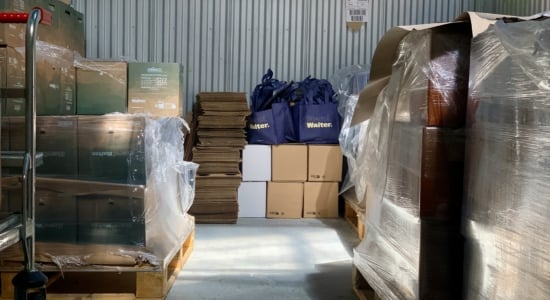
Subscribe to our newsletter

Shipping is one of the most critical components of running a successful WooCommerce store. Whether you’re selling domestically or internationally, choosing the best WooCommerce shipping fulfillment solution can have a direct impact on your margins, customer satisfaction, and scalability. In this guide, I’ll walk you through what makes a great fulfillment setup, highlight the most advanced solutions, and provide data-driven insights to help you make the right decision.
Shipping fulfillment is one of the most essential yet often underestimated components of running an e-commerce business. If you think it’s only about transporting a package from point A to point B, you’re sorely mistaken. It’s a complex operation that directly influences the customer experience, operational efficiency, and ultimately, your bottom line.
Shipping fulfillment refers to the complete process that occurs after a customer places an order on your website. It includes everything from managing inventory and picking products from storage, to packing, labeling, shipping, and tracking the order until it reaches the customer. Depending on the business model, fulfillment can be handled internally (self-fulfillment), outsourced to a third-party logistics provider (3PL), or managed through hybrid solutions that combine automation and warehousing services.
Shipping fulfillment consists of several distinct stages:
Shipping fulfillment is a key driver of customer satisfaction and retention. According to a report by Metapack, 66% of consumers say delivery experience directly impacts brand loyalty, while 45% have abandoned a purchase due to unsatisfactory delivery options.
Efficient fulfillment provides:
Moreover, fulfillment is often where first-time buyers decide whether to become repeat customers. A smooth, predictable delivery builds trust, while delays, errors, or vague communication can damage your reputation.
There are several fulfillment models that e-commerce merchants can choose from:
Now that you know how important shipping fulfillment is, you’re probably wondering how it connects to WooCommerce. While the core WooCommerce platform includes basic tools, adding the right plugins transforms your store into a highly efficient logistics operation. Instead of manually logging into external carrier platforms, copying and pasting addresses, or uploading CSV files, you can easily manage the entire shipping process without ever leaving WooCommerce. Once the plugin is installed and connected to a carrier account, a range of powerful automation tools becomes available.
Here’s how WooCommerce shipping integration enhances each step of the fulfillment process:
Moreover, plugins are developed natively for WooCommerce, ensuring a smooth and responsive experience, even for high-volume stores. Because the plugins rely on official carrier APIs, shipping rates and services are always up to date and aligned with the carrier’s current offerings and pricing.
The ideal setup depends on your business model, product types, shipping destinations, and customer expectations. What works for a local handmade crafts store may be entirely unsuitable for an international electronics retailer.
Yet, despite these differences, one universal truth holds: shipping fulfillment can make or break the customer experience. In fact, a Baymard Institute study found that 48% of online shoppers abandon their carts due to unexpected shipping costs, while 22% cite slow delivery options as a reason for not completing their order.
Let’s be honest – shipping is a crucial part of the customer experience. When shipping is seamless, transparent, and fast, it doesn’t just deliver orders, it builds trust, encourages loyalty, and drives repeated purchases. It was proved by Salesforce’s State of the Connected Customer report, saying that a staggering 80% of consumers say that the experience a company provides is just as important as its products or services.
Customers expect clarity and reliability in delivery times. A McKinsey study found that timely delivery is valued more than unpredictable speed, with respondents willing to wait up to a week for on-time delivery rather than risk late arrival. By integrating live carrier rates and guaranteed delivery dates, WooCommerce stores offer accurate expectations and reduce abandoned carts.
Speed matters. DHL confirms that fast shipping not only satisfies but differentiates your brand and increases repurchase likelihood. When WooCommerce plugins enable 2‑3‑day shipping options, fulfillment becomes a loyalty driver, not just an operational task.
Effective shipping fulfillment includes real-time order tracking and proactive notifications. Studies show that clear communication during delivery reduces anxiety and builds brand confidence. When WooCommerce integrates carrier APIs to auto-populate tracking numbers and updates, it minimizes “where is my order?” support tickets, and fosters a reliable experience.
![]()
Different customers have different needs. Some want economy, others prioritize speed or local pickup. Consumers expect tailored, consistent experiences across all channels. WooCommerce solutions let you offer multiple shipping methods based on weight, destination, cart value, or product type, giving customers choice and confidence at checkout.
The best WooCommerce shipping fulfillment balances automation, transparency, and customer-centricity. If you’re looking for a reliable, scalable, and flexible solution, Octolize’s suite of plugins offers one of the most advanced toolkits for WooCommerce stores.